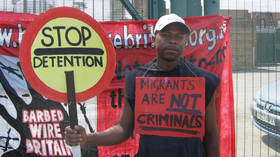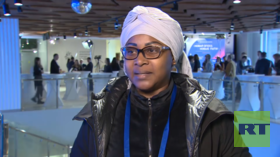Interview with Vadim Kozyulin
Vadim Kozyulin is a military analyst and the Director of the Conventional Arms Programme in Russia's Centre for Policy Studies. He gave RT his insight into the visit of U.S. Secretary of State Condoleezza Rice to Moscow.
Russia Today: What are the main arguments being put forward by the U.S. for setting up an anti-missile defence base in Eastern Europe?
Vadim Kozyulin: This missile-defence system is constructed to countermeasure ballistic missiles coming from Iran and North Korea. According to U.S. specialists, the routes of these missiles come across the territories of Eastern Europe and Russia.
RT: Why do you think Russia feels under threat by the plans?
V.K.: The problem is that for decades Russia, or the former Soviet Union and Eastern bloc, and United States and NATO countries, were living under protection of the nuclear potentials, so-called ‘nuclear deterrents’. So, this anti-missile defence system might question not only Iran or North Korean nuclear potential, missile potential, but Soviet or Russian potential as well. According to President Putin, if Russian people feel unprotected, unsafe, the Russian leadership will have to take measures, or make a so-called ‘asymmetric response’. We don’t know exactly what that means at the moment.
RT: And, also, there is the issue of the proximity of these bases to Russia. How close will these bases, if they are built, be to the Russian borders?
V.K.: It’s rather close, especially taking into account the technical performances of the radars – they are up to 100 kilometres from the Russian border and can look deep into the territory of Russia – at least to 1,000 kilometres. And, I am sure, even up to 5,000 kilometres. At the first stage it probably will not be capable of countermeasuring the nuclear arsenal completely, but potentially, in 10 years, when the system is built and completely deployed, it will represent a real threat to Russian ballistic missiles.
RT: What was made of Russia’s counterproposal – that of joint use of the Gabala radar station in Azerbaijan?
V.K.: Moscow's proposal was to include Russian radar deployed not far from Iran border and to make it part of the new missile-defence system. Unfortunately, the U.S. rejected this proposal and agreed only to use it as one part of the system. Actually, to my view, the question is not about Russia taking part in the system. The question is much more valuable and important: who will control, who will be able to switch on or to switch off the system in general. So, Russia wants to play a key role in the system.
RT: How successful, in your view, are these current talks in Moscow going to be?
V.K.: I don’t think there will be a breakthrough. The problem is that there is a real chance for the U.S. to neutralize Russia's nuclear potential and this threat is more serious than the potential hypothetical asymmetrical threat. So, President Putin, I think, should find more strong arguments in this conversation.












